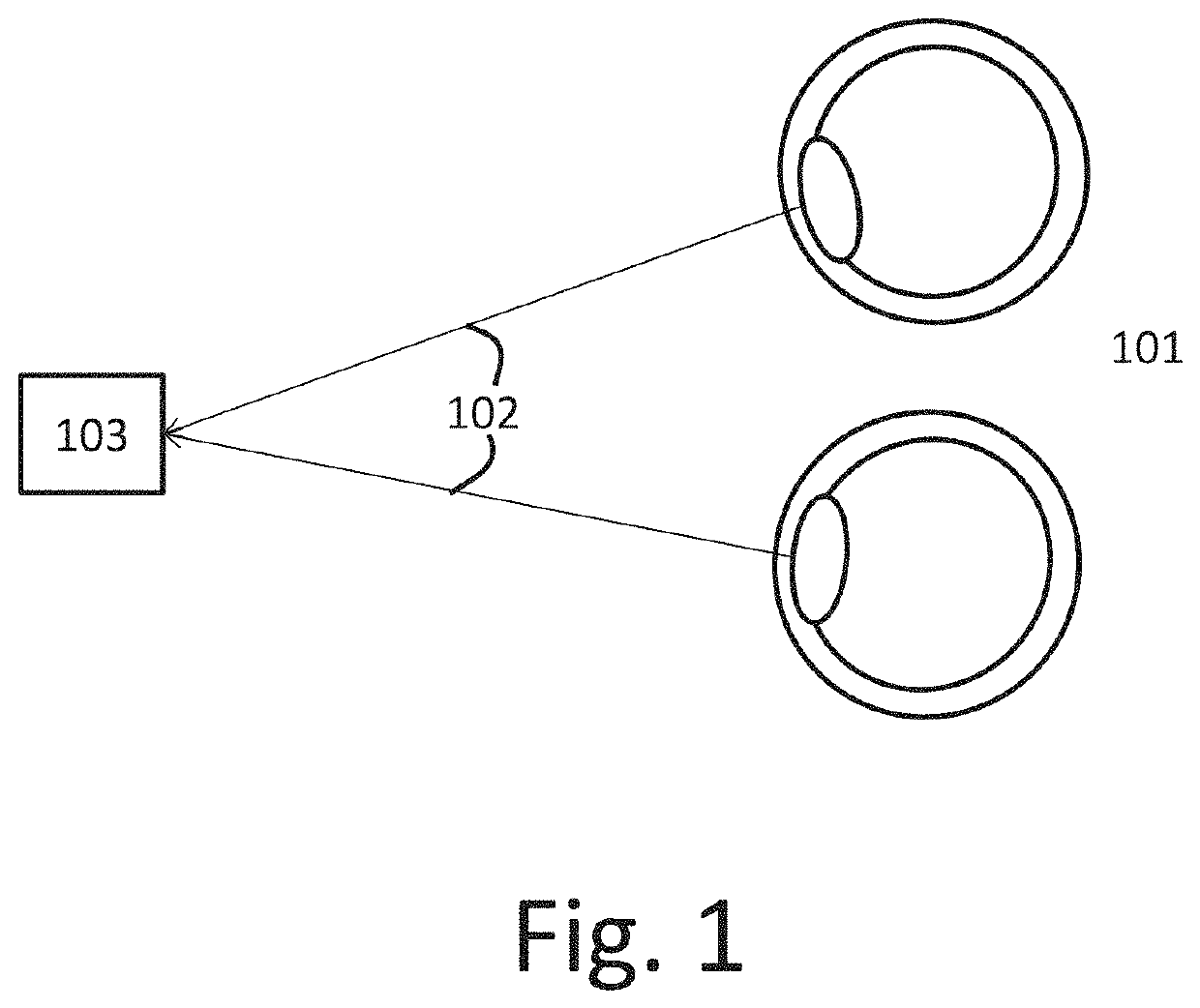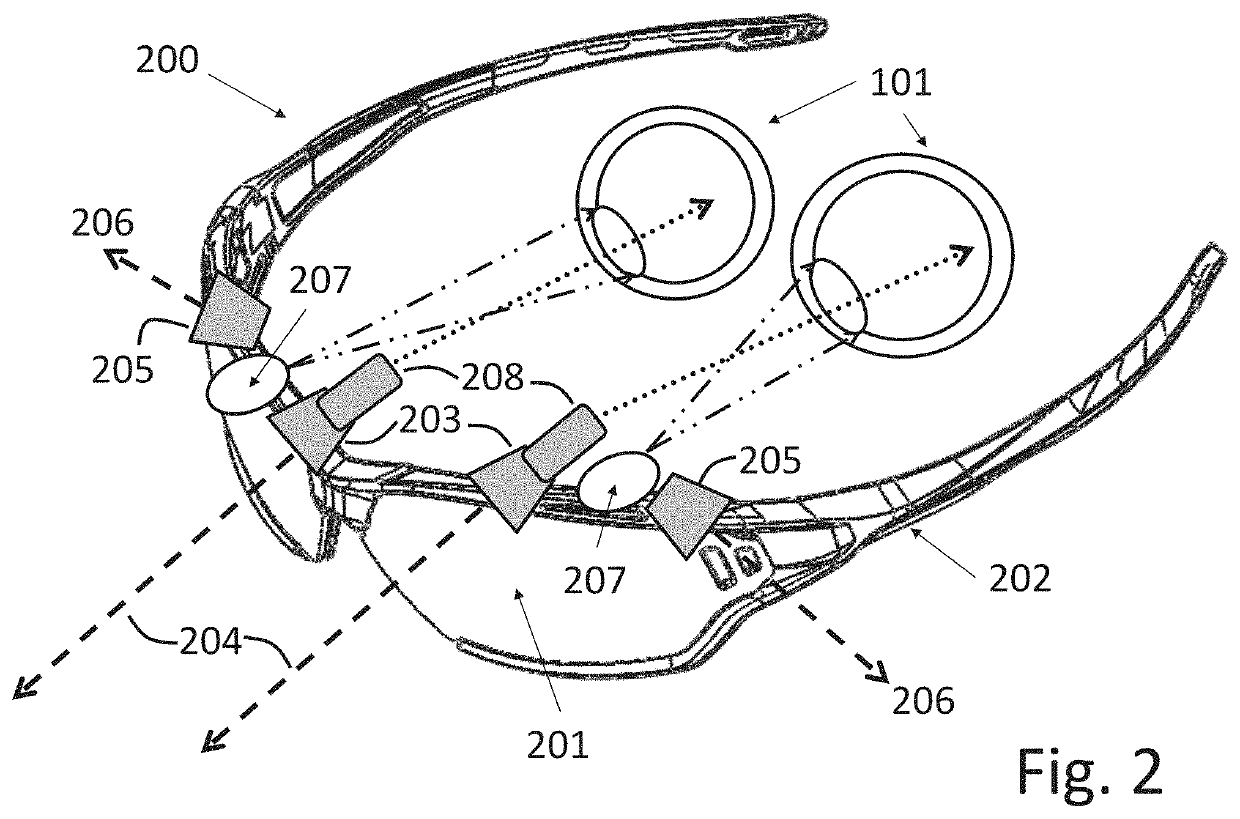Electronic visual headset
a visual headset and electronic technology, applied in the field of optics, can solve the problems of unclear tracking methods, cumbersome calibration process, and blurry display for most naked eye users, and achieve the effects of minifying the scene, enhancing peripheral vision, and enhancing the visual
- Summary
- Abstract
- Description
- Claims
- Application Information
AI Technical Summary
Benefits of technology
Problems solved by technology
Method used
Image
Examples
first embodiment
[0045]the display means is shown in FIG. 2. The interior of each screen 201 is a neutral opaque material such as black plastic (not visible in the figure). Retinal projectors 208 project images directly into each eye, through the pupil, to be focused on the retina.
second embodiment
[0046]the display means is shown in FIG. 3. The interior surface of each screen 201 is a mirrored surface 301. Left and right retinal projectors 208 are positioned near the temples on frame 202. Projectors 208 project images onto each mirrored surface. The images are then reflected into each eye. This process is called indirect retinal projection. The advantage of indirect projection is to increase the distance between the image and the eye; human eyes have trouble focusing on objects less than a few inches away.
third embodiment
[0047]the display means is shown in FIGS. 4a, 4b, 5a, and 5b. The interior surface of each screen 201 is a display screen 400 such as an LCD, DLP, or OLED screen.
[0048]The device has left and right eye scanners 207, shown in FIG. 2. Each scanner comprises an eye-tracking sensor. An eye-tracking sensor has an eye-tracking projector, an eye-tracking detector, and a processor (not shown). The eye-tracking projector projects narrow beams of infrared light of a first frequency onto the cornea. The eye-tracking detector detects the location of the pupil and the reflection of the infrared beam from the cornea. By analyzing the relative locations of the pupil and the corneal reflection, the processor determines the direction in which the eye is looking. This technique is known as pupil-center / corneal-reflection (PCCR) eye-tracking, and it is well-known in AR / VR technology and other fields.
[0049]The processor uses information from the PCCR eye-tracking sensors to determine the line of sight ...
PUM
 Login to View More
Login to View More Abstract
Description
Claims
Application Information
 Login to View More
Login to View More - R&D
- Intellectual Property
- Life Sciences
- Materials
- Tech Scout
- Unparalleled Data Quality
- Higher Quality Content
- 60% Fewer Hallucinations
Browse by: Latest US Patents, China's latest patents, Technical Efficacy Thesaurus, Application Domain, Technology Topic, Popular Technical Reports.
© 2025 PatSnap. All rights reserved.Legal|Privacy policy|Modern Slavery Act Transparency Statement|Sitemap|About US| Contact US: help@patsnap.com



